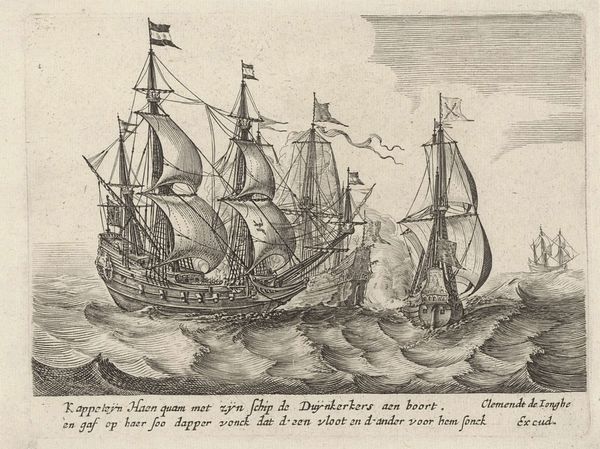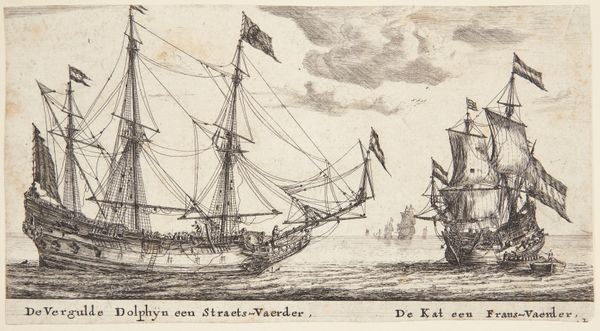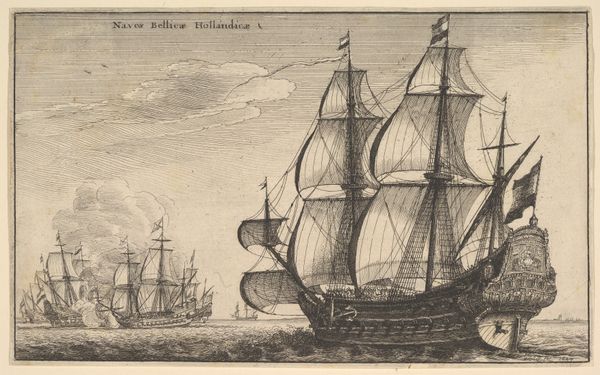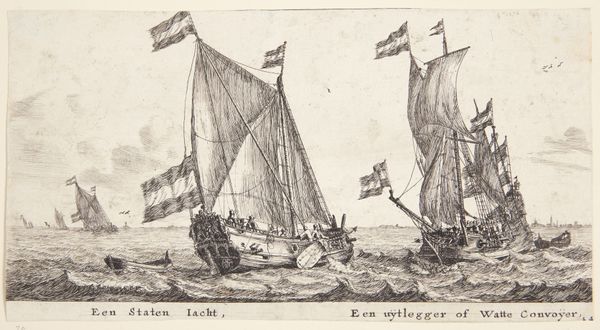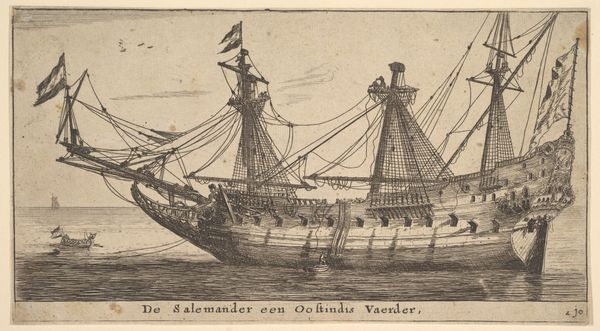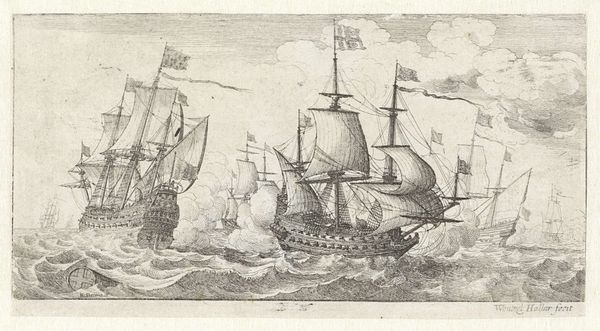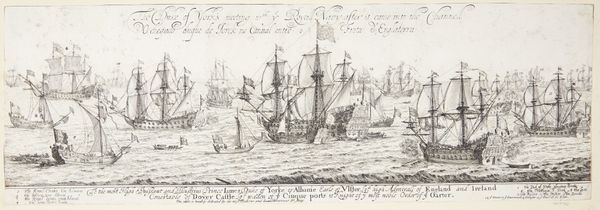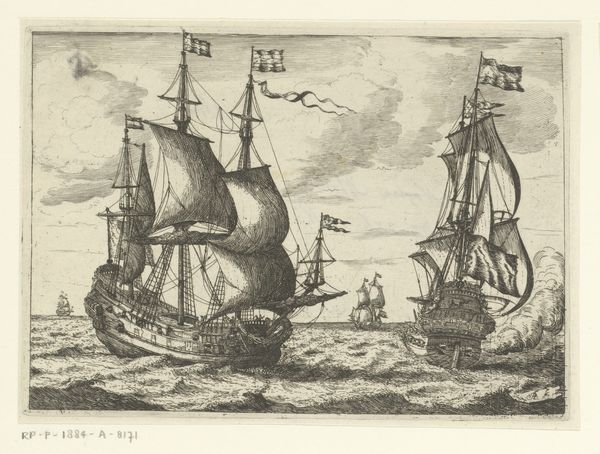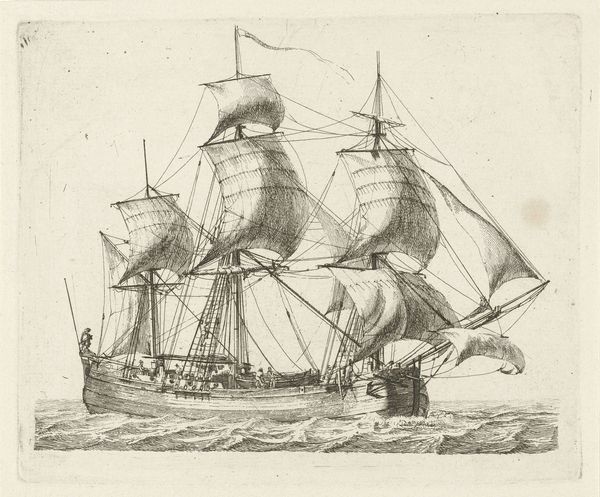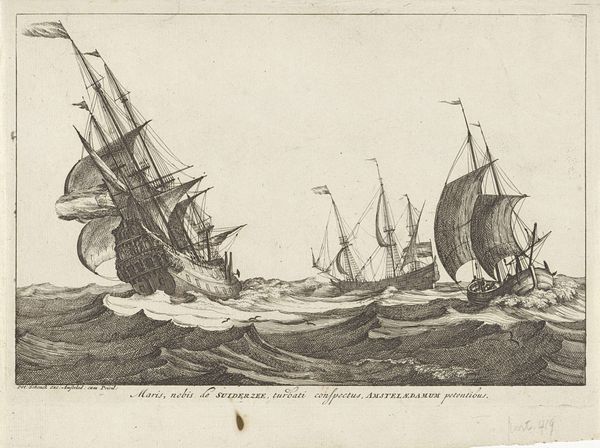
print, etching
#
dutch-golden-age
# print
#
etching
#
landscape
#
cityscape
Dimensions: 133 mm (height) x 246 mm (width) (bladmaal)
Editor: Here we have Reinier Nooms’ "Skibene 't Gele Fortuin og De Liefde," an etching made sometime between 1623 and 1664. I’m immediately struck by how detailed the ships are; you can almost feel the rough seas. What story do you think this image tells? Curator: This etching captures the maritime prowess of the Dutch Golden Age, but also hints at the darker sides of this 'golden' era. How might we interpret these ships, symbols of trade and exploration, within the context of Dutch colonialism and its reliance on exploited labor and resources? Editor: That’s a perspective I hadn't considered. So, beyond just admiring the artistry, we should be thinking critically about what these ships represent in a historical context? Curator: Exactly! The etching, seemingly a straightforward depiction of ships, becomes a site of tension when viewed through an intersectional lens. Who profited from these voyages? Whose stories are absent? Editor: It sounds like we need to examine what this image hides, as well as what it shows. Are there any particular details that suggest this complexity? Curator: Consider the composition itself. The imposing size of the ships compared to the distant cityscape could symbolize the overwhelming power these voyages wielded over distant lands and people. How does the detailed rendering of the ships juxtapose with the less defined background, drawing attention to Dutch advancement, and potentially overshadowing the colonized spaces? Editor: I see what you mean. I definitely appreciate the artist’s skill, but I understand now that it's important to view the image within its historical and social context. Curator: Indeed. It's a reminder that art, even seemingly simple seascapes, can be a powerful lens through which to examine complex historical narratives and the ongoing legacies of colonialism. Editor: Thanks. I'll definitely keep that in mind when looking at other artworks from this era.
Comments
No comments
Be the first to comment and join the conversation on the ultimate creative platform.
